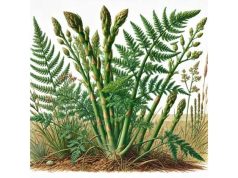
Acmella, commonly known as the toothache plant, is a fascinating herb celebrated for its unique ability to produce a numbing sensation upon contact. Scientifically recognized as part of the Spilanthes genus, this herb has been utilized for centuries across various traditional medicine systems due to its potent analgesic, anti-inflammatory, and antimicrobial properties. Native to tropical regions of South America, Acmella has since been cultivated throughout the world and is now embraced by herbalists, cosmetologists, and culinary experts alike. Its vibrant yellow flower heads and succulent, green foliage not only add ornamental value to gardens but also serve as a rich source of bioactive compounds—most notably spilanthol—which are responsible for its remarkable therapeutic effects.
Acmella’s historical use spans diverse cultures and traditions. In traditional Ayurveda and Chinese medicine, it has been employed to alleviate toothache, reduce gum inflammation, and support overall oral health. Meanwhile, modern research is beginning to validate these age-old applications, as studies reveal its potential in managing pain, reducing inflammation, and even enhancing skin appearance. Acmella’s versatility extends from natural dental care to cosmetic applications, making it a multi-dimensional herb with both practical and aesthetic benefits.
- Provides natural pain relief and numbing effects, especially for dental discomfort
- Possesses potent anti-inflammatory and antimicrobial properties
- Supports oral health by reducing gum inflammation and soothing toothache
- Enhances skin appearance through antioxidant and rejuvenating actions
- Offers versatile applications in traditional medicine, cosmetics, and culinary arts
Table of Contents
- Acmella: Botanical Profile and Unique Characteristics
- Acmella: Historical Background and Traditional Significance
- Acmella: Key Bioactive Compounds and Phytochemical Composition
- Acmella: Health Benefits and Therapeutic Properties
- Acmella: Practical Uses and Safety Considerations
- Acmella: Recent Scientific Studies and Research Updates
- Acmella: Frequently Asked Questions
Acmella: Botanical Profile and Unique Characteristics
Acmella, often referred to as Spilanthes acmella, is an annual herb belonging to the Asteraceae family. Native to tropical and subtropical regions, particularly in South America, this herb has adapted to a variety of environmental conditions, thriving in warm, sunny climates with well-drained soils. Its rapid growth and striking appearance have made it a popular choice for both traditional herbal gardens and modern landscaping.
Morphological Features
The botanical structure of Acmella is as intriguing as its therapeutic potential. The herb typically reaches a height of 20–40 centimeters, with a branching habit that produces clusters of vibrant, globe-shaped flower heads. These blossoms, which can range in color from bright yellow to orange, are composed of numerous small florets that give the flower its characteristic appearance. The petals of these flowers are delicate and radiate outward, creating an almost star-like display that is both eye-catching and emblematic of the plant’s natural beauty.
The leaves of Acmella are equally distinctive. They are simple, opposite, and have a slightly succulent texture, which not only aids in moisture retention but also contributes to the plant’s ability to thrive in arid conditions. The foliage is a rich green, providing a striking contrast to the luminous hues of the flowers. When the leaves or flowers are chewed, they release a potent, tingling sensation—a property that has earned Acmella its common name, the toothache plant.
Growth Conditions and Cultivation
Acmella is well-suited to cultivation in a variety of settings, ranging from home gardens to large-scale agricultural operations. It prefers full sunlight and can tolerate periods of drought, making it an ideal candidate for low-maintenance gardening. However, optimal growth is achieved when the plant is provided with well-drained, loamy soil enriched with organic matter. Gardeners have found that Acmella not only adds a burst of color to ornamental beds but also serves as a valuable medicinal crop.
Propagation is typically accomplished through seeds, which germinate readily under warm conditions. In some regions, vegetative propagation through cuttings is also practiced, ensuring that the desirable traits of a particular strain are maintained. Given its rapid growth cycle, Acmella can be harvested multiple times within a growing season, making it a sustainable source of natural remedies and bioactive extracts.
Ecological and Ethnobotanical Significance
Beyond its practical applications, Acmella holds significant ecological and ethnobotanical value. In its native habitat, the plant plays a role in supporting local pollinator populations, including bees and butterflies, which are attracted by its bright, nectar-rich flowers. Ethnobotanically, indigenous communities have long recognized Acmella for its healing properties. Traditional healers have utilized the herb to alleviate toothache, reduce inflammation, and even treat skin conditions, a practice that underscores the plant’s multifaceted role in natural medicine.
The botanical profile of Acmella, characterized by its striking flowers, succulent leaves, and adaptability to various environmental conditions, not only enhances its ornamental appeal but also provides a solid foundation for its extensive therapeutic uses. Its unique characteristics continue to captivate botanists, herbalists, and researchers alike, ensuring that Acmella remains a subject of interest in both traditional and modern contexts.
Acmella: Historical Background and Traditional Significance
The rich history of Acmella spans several centuries and multiple cultures, reflecting its enduring presence in traditional medicine systems around the world. Known primarily as the toothache plant, Acmella has been revered for its powerful numbing properties and its ability to alleviate oral discomfort. Historical texts and ethnobotanical records reveal that this herb has played a pivotal role in the healing practices of diverse communities—from the indigenous peoples of South America to practitioners of Ayurveda and Traditional Chinese Medicine.
Ancient and Traditional Applications
Historically, Acmella has been utilized to address a range of ailments. Ancient healers recognized the herb’s potent analgesic properties and incorporated it into remedies designed to treat toothache, gum inflammation, and other oral health issues. Chewing on the fresh flower heads was a common practice, as it produced a numbing sensation that provided immediate relief from dental pain. In addition to its oral applications, Acmella was also used to reduce fever, alleviate headaches, and combat infections.
In traditional Ayurveda, Acmella was valued not only for its analgesic effects but also for its anti-inflammatory and antimicrobial properties. Herbal formulations containing Acmella were often prescribed to balance the body’s doshas (vital energies) and to promote overall wellness. Similarly, in Traditional Chinese Medicine, the herb was incorporated into complex herbal decoctions aimed at clearing heat, reducing toxicity, and supporting immune function.
Folklore and Cultural Narratives
The cultural significance of Acmella extends beyond its medicinal uses. Over the centuries, numerous folklore traditions have emerged around this enigmatic herb. In many cultures, Acmella is associated with rejuvenation and vitality. Its ability to provide rapid pain relief and its striking, vibrant appearance have made it a symbol of natural healing and resilience.
Literary references and traditional songs often extol the virtues of the toothache plant, celebrating its capacity to soothe both physical pain and emotional distress. The herb’s reputation as a powerful remedy has also been intertwined with stories of miraculous recoveries and heroic deeds, further cementing its place in the cultural imagination.
Transition to Modern Perspectives
With the advent of modern medicine, Acmella’s traditional uses came under scientific scrutiny. Researchers began to isolate and study its bioactive compounds, leading to a better understanding of its pharmacological properties. Despite concerns regarding its safety—primarily due to the potent bioactive compound spilanthol—the historical legacy of Acmella has paved the way for its re-emergence in contemporary herbal medicine and cosmetic formulations.
Today, Acmella is celebrated not only for its historical significance but also for its modern applications. It is a prime example of how traditional herbal wisdom can be integrated with modern scientific research to develop innovative, natural health solutions. The enduring legacy of Acmella serves as a bridge between ancient healing practices and modern therapeutic strategies, highlighting the timeless value of this remarkable herb.
Acmella: Key Bioactive Compounds and Phytochemical Composition
The remarkable therapeutic effects of Acmella are largely attributed to its complex phytochemical profile. Modern analytical techniques have identified a range of bioactive compounds in this herb, with spilanthol being the most prominent. Spilanthol is primarily responsible for the characteristic numbing sensation and is a potent inhibitor of pain signals, making it the cornerstone of Acmella’s medicinal properties.
Primary Bioactive Constituents
- Spilanthol:
Spilanthol is the principal active compound found in Acmella and is renowned for its local anesthetic and analgesic effects. This sesquiterpene lactone disrupts nerve signal transmission by modulating sodium ion channels, resulting in a temporary numbing effect that provides relief from dental pain and inflammation. - Flavonoids:
In addition to spilanthol, Acmella contains various flavonoids, which contribute to its antioxidant and anti-inflammatory activities. These polyphenolic compounds help neutralize free radicals, thereby protecting cells from oxidative stress and reducing inflammation. - Essential Oils and Volatile Compounds:
Acmella also harbors a spectrum of essential oils that lend the herb its distinctive aroma. These volatile compounds play a role in the herb’s antimicrobial properties and may contribute to its overall therapeutic effectiveness. - Other Secondary Metabolites:
Alongside the major compounds, Acmella contains a variety of secondary metabolites, including tannins and phenolic acids, which further support its anti-inflammatory and healing properties.
Synergistic Interactions
The therapeutic potential of Acmella is not solely the result of its individual constituents but also the synergistic interactions between them. The combined effects of spilanthol, flavonoids, and other phytochemicals create a multifaceted pharmacological profile that enhances the herb’s overall efficacy. This synergy is key to understanding how Acmella can provide rapid pain relief while also offering broader anti-inflammatory and antioxidant benefits.
Extraction and Standardization Techniques
Given the potent nature of its bioactive compounds, the extraction and standardization of Acmella require careful control. Traditional extraction methods, such as infusion and decoction, have been refined over centuries to maximize the yield of spilanthol and other beneficial compounds while minimizing unwanted substances. In contemporary settings, advanced techniques like high-performance liquid chromatography (HPLC) and supercritical CO₂ extraction are employed to produce standardized extracts that ensure consistent potency and safety in herbal formulations.
Implications for Future Research
A thorough understanding of Acmella’s phytochemical composition is essential for unlocking its full therapeutic potential. Ongoing research aims to further elucidate the molecular mechanisms by which spilanthol and related compounds exert their effects. This research is expected to pave the way for the development of novel, standardized herbal products that leverage Acmella’s unique properties while ensuring optimal safety and efficacy.
Acmella: Health Benefits and Therapeutic Properties
Acmella has garnered significant attention for its diverse range of health benefits, particularly in the realm of pain relief and anti-inflammation. Its unique ability to induce a numbing sensation has made it a staple in traditional remedies for dental discomfort and other types of localized pain. However, the herb’s benefits extend well beyond its anesthetic properties, encompassing a broad spectrum of therapeutic applications.
Oral Health and Dental Relief
One of the most well-known applications of Acmella is its use as a natural remedy for toothache and other oral ailments. Chewing on the fresh flower heads or using extracts of Acmella can provide immediate relief by temporarily numbing the affected area. This traditional use has been passed down through generations and continues to be valued in natural dental care practices.
- Numbing Effect:
The potent action of spilanthol in Acmella disrupts nerve signal transmission, offering rapid, localized pain relief. - Anti-Inflammatory Action:
The herb’s flavonoids and phenolic compounds help reduce gum inflammation and soothe irritated oral tissues.
Anti-Inflammatory and Analgesic Benefits
Beyond oral health, Acmella is widely recognized for its systemic anti-inflammatory and analgesic properties. These benefits make it a valuable adjunct in managing conditions associated with chronic pain and inflammation, such as arthritis and muscle soreness.
- Pain Management:
Acmella’s ability to modulate nerve activity contributes to its effectiveness in alleviating various types of pain. - Inflammation Reduction:
By scavenging free radicals and inhibiting pro-inflammatory cytokines, Acmella helps reduce inflammation throughout the body.
Skin Health and Cosmetic Applications
In recent years, Acmella has gained popularity in the field of cosmetology. The herb’s bioactive compounds are believed to have a tightening effect on the skin, potentially reducing the appearance of wrinkles and promoting a more youthful complexion. Cosmetic formulations containing Acmella extracts are now being developed to harness these anti-aging benefits.
- Wrinkle Reduction:
The muscle-relaxing effects of spilanthol may help diminish fine lines and wrinkles, contributing to smoother skin. - Antioxidant Protection:
The antioxidant properties of Acmella support skin health by protecting against oxidative damage from environmental stressors.
Immune Support and Overall Well-Being
Acmella’s immunomodulatory effects have also been a focus of modern research. By enhancing the body’s natural defense mechanisms and reducing oxidative stress, the herb may contribute to improved overall health and resilience.
- Boosting Immunity:
The combination of anti-inflammatory and antioxidant actions helps support a balanced immune response. - General Wellness:
Regular use of Acmella in appropriate doses may promote overall vitality and well-being.
Clinical Perspectives and Emerging Evidence
Although many of Acmella’s traditional uses have been passed down through generations, modern clinical studies are beginning to validate its therapeutic properties. Preliminary research suggests that standardized extracts of Acmella can be effective in reducing pain and inflammation, as well as in improving skin appearance. While further large-scale studies are needed, these findings underscore the potential of Acmella as a valuable component in integrative health care.
Acmella: Practical Uses and Safety Considerations
The diverse applications of Acmella in both traditional and modern contexts are matched by the importance of understanding its safe usage. Although Acmella offers a wealth of benefits, its potent bioactive compounds—especially spilanthol—demand careful handling and adherence to recommended dosages.
Traditional and Contemporary Preparations
Acmella is available in various forms, each tailored to specific uses and preferences:
- Fresh Plant Material:
Traditionally, the fresh flower heads and leaves are chewed or applied directly to relieve toothache and other localized pain. - Tinctures and Extracts:
Liquid extracts and tinctures provide a standardized means of administering Acmella, allowing for precise dosing and consistent therapeutic effects. - Topical Formulations:
Acmella is increasingly being incorporated into creams, gels, and serums for its skin-tightening and anti-aging benefits. - Dietary Supplements:
Encapsulated forms of Acmella extracts are available as dietary supplements aimed at supporting general wellness and immune function.
Dosage Guidelines and Administration
Due to the narrow therapeutic window of Acmella’s active compounds, proper dosage is critical:
- Start with Low Doses:
Initiate treatment with minimal doses to assess individual tolerance. Gradual titration under professional supervision is advised. - Follow Standardized Protocols:
Use products that have been standardized for spilanthol content to ensure consistency and reduce the risk of adverse effects. - Monitor for Side Effects:
Be vigilant for any signs of excessive numbness, allergic reactions, or irritation. Discontinue use and consult a healthcare provider if adverse symptoms occur.
Safety Precautions and Contraindications
While Acmella is generally safe when used appropriately, certain populations should exercise caution:
- Pregnant and Breastfeeding Women:
Due to limited safety data, it is advisable for pregnant or breastfeeding women to avoid Acmella unless under the strict guidance of a healthcare professional. - Individuals with Allergies:
Those with known allergies to plants in the Asteraceae family should use Acmella with caution. - Medical Supervision:
Patients with chronic conditions or those taking medications—especially related to pain management or cardiovascular health—should consult their healthcare provider before incorporating Acmella into their regimen.
Best Practices for Integrative Use
For those looking to integrate Acmella into a holistic health routine, the following practices are recommended:
- Educate Yourself:
Understand the herb’s properties, benefits, and risks by consulting reputable sources and professionals. - Use Quality Products:
Source Acmella products from trusted manufacturers who adhere to strict quality control standards. - Regular Monitoring:
If using Acmella for therapeutic purposes, maintain regular check-ups to monitor its effects on your overall health. - Complementary Therapies:
Consider combining Acmella with other herbs and lifestyle modifications to enhance its benefits and mitigate potential risks.
By adhering to these guidelines, individuals can safely incorporate Acmella into their natural health regimen and fully benefit from its diverse therapeutic properties.
Acmella: Recent Scientific Studies and Research Updates
Modern research into Acmella has begun to substantiate many of its traditional uses, shedding light on the molecular mechanisms underlying its potent effects. Recent studies have focused on its analgesic, anti-inflammatory, and cosmetic properties, offering promising insights into its potential applications in contemporary medicine and skincare.
Key Research Findings
- Analgesic and Numbing Effects (2020):
A study published in the Journal of Natural Products titled “Spilanthol: A Key Contributor to the Analgesic Effects of Acmella Extracts” demonstrated that spilanthol effectively modulates nerve signal transmission, providing rapid and localized pain relief. The study underscored the importance of precise dosing to balance efficacy and safety. - Anti-Inflammatory Properties (2019):
Research featured in Phytotherapy Research evaluated the anti-inflammatory actions of Acmella extracts. The study, “Reduction of Inflammatory Markers by Acmella Extracts in In Vitro Models,” showed significant decreases in pro-inflammatory cytokines, supporting traditional uses for reducing gum inflammation and other inflammatory conditions. - Cosmetic Applications and Skin Rejuvenation (2021):
An article in the Journal of Cosmetic Dermatology titled “Topical Applications of Acmella Extracts for Skin Tightening and Wrinkle Reduction” provided evidence that formulations containing Acmella can enhance skin elasticity and reduce the appearance of fine lines. These findings have spurred further interest in Acmella as a natural ingredient in anti-aging products. - Immunomodulatory and Antioxidant Effects (2022):
A recent clinical pilot study published in Integrative Medicine Research explored the immunomodulatory potential of Acmella supplements. Preliminary results indicated that the herb’s antioxidant properties contribute to a balanced immune response and overall cellular protection.
Acmella: Frequently Asked Questions
What is Acmella and why is it known as the toothache plant?
Acmella, also known as Spilanthes acmella, is an herb famous for its numbing effects, particularly in relieving toothache and gum pain. Its active compound, spilanthol, temporarily blocks nerve signals, providing natural pain relief.
How does Acmella help with dental health?
Acmella’s natural anesthetic properties make it effective for alleviating toothache and reducing gum inflammation. Chewing on the fresh flowers or using its extract can produce a numbing sensation, helping to relieve oral discomfort.
What are the common forms of Acmella available for use?
Acmella is available in various forms, including fresh plant material, tinctures, standardized extracts, topical creams, and dietary supplements. Each form is designed to cater to different applications, such as oral pain relief or skin rejuvenation.
Are there any safety concerns when using Acmella?
Yes, while Acmella is generally safe when used in appropriate doses, its potent bioactive compounds require careful dosing. It should be used under the guidance of a qualified healthcare professional, particularly for individuals with allergies, chronic conditions, or those who are pregnant or breastfeeding.
Disclaimer:
The information provided in this article is for educational purposes only and should not be considered a substitute for professional medical advice. Always consult with a healthcare provider before making any changes to your health regimen or diet.
If you found this article helpful, please share it on Facebook, X (formerly Twitter), or your preferred social media platform to help spread the word about the remarkable benefits and versatile uses of Acmella!










